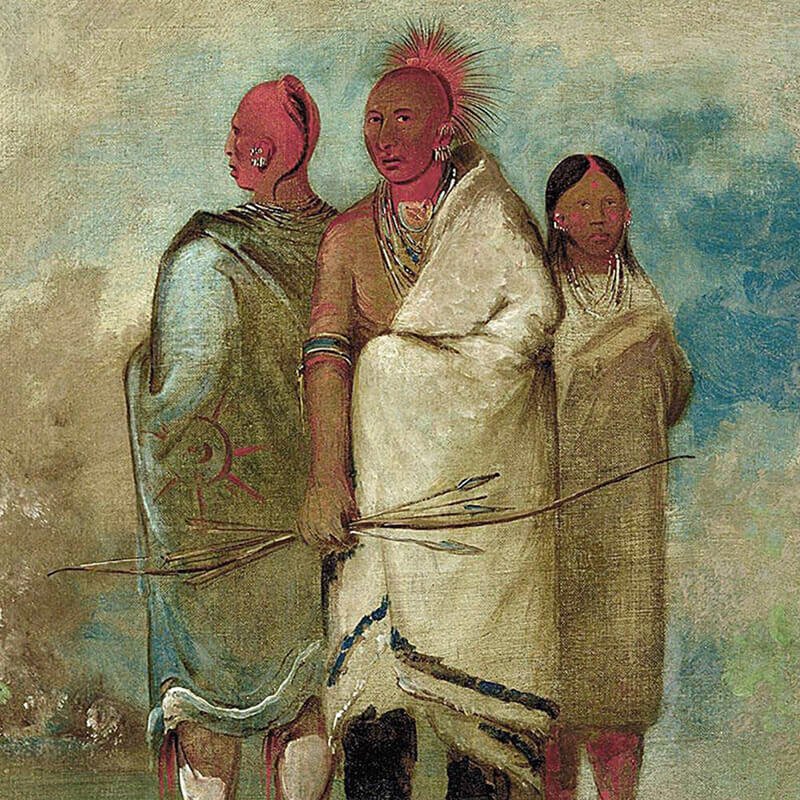
1730:
Who had the power to choose where they worked?
In the 1720s the Meskwaki (named the Fox Indians by Europeans) began a long series of skirmishes and raids against the French, their Native allies, and other competing Tribes in order to gain control over hunting grounds.

1818:
Who had the power to choose where they lived?
The area that became McLean County was occupied by Native people when Illinois was founded. But the U.S. government wasted no time in their efforts to remove all Native claims to Illinois land.
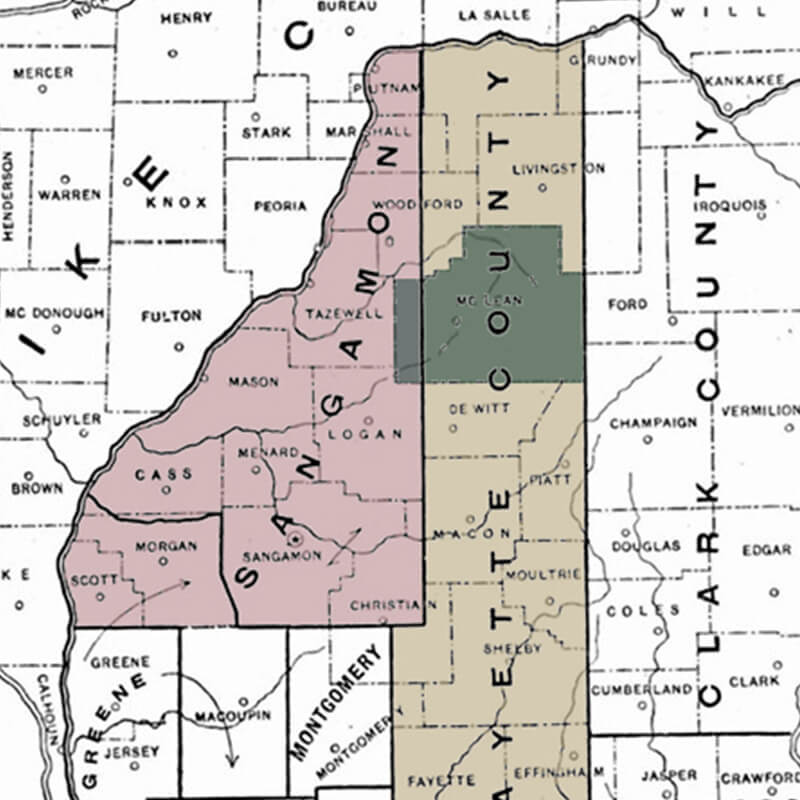
1822:
Who had the power to participate?
The area’s earliest settlers found themselves geographically marginalized, which made it difficult to vote.

1844:
Who had the power to control another human’s life?
Despite predominant pro-slavery views during the 1830s through the 1850s, there were those who risked prosecution under the Fugitive Slave Act to help enslaved men, women, and children escape to freedom in the north.
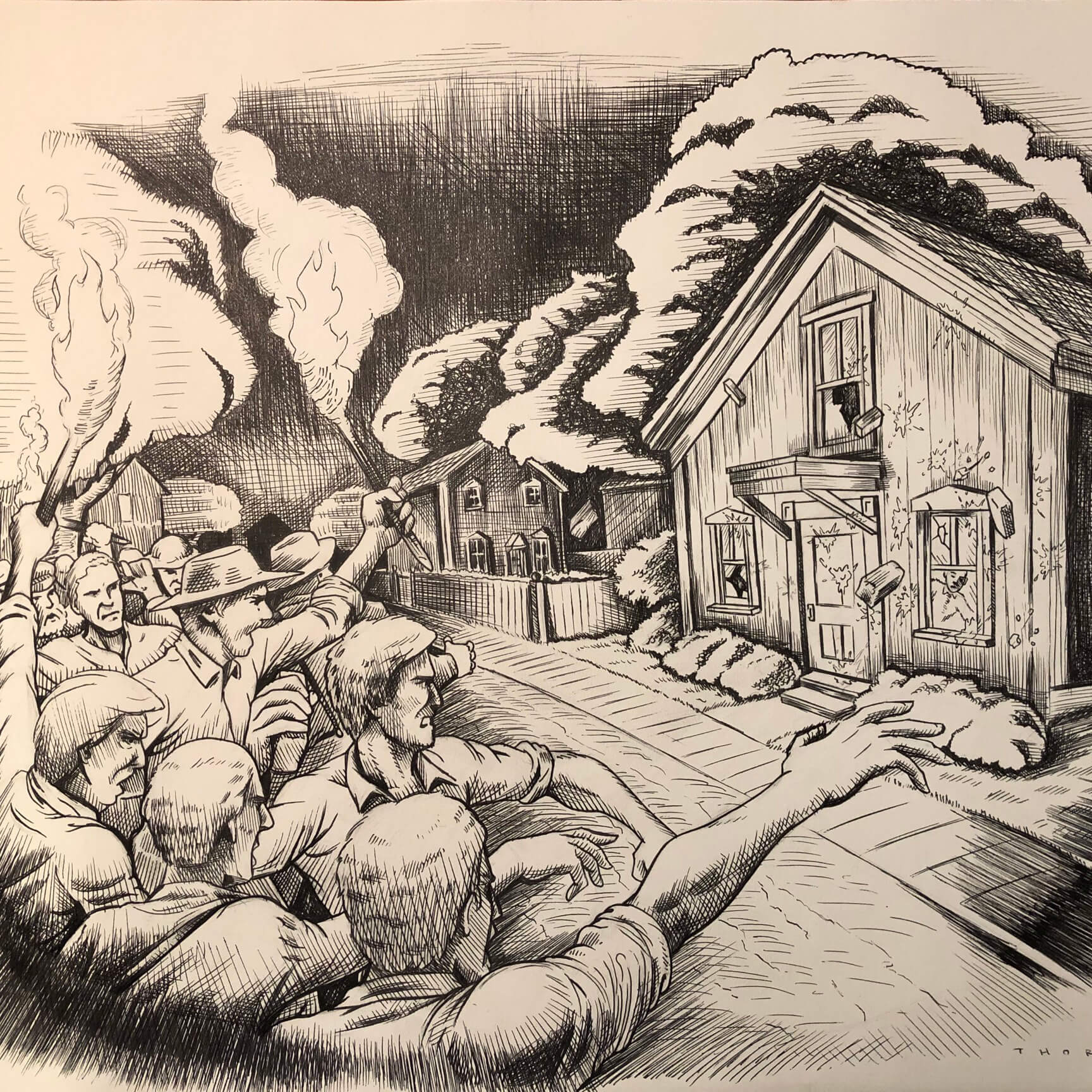
1846:
Who had the power to instill fear?
Intimidation, bullying, threats, and manipulation have all been used by people in McLean County in order to gain and maintain power. In the process individual rights and freedoms were often denied to those on the receiving end.
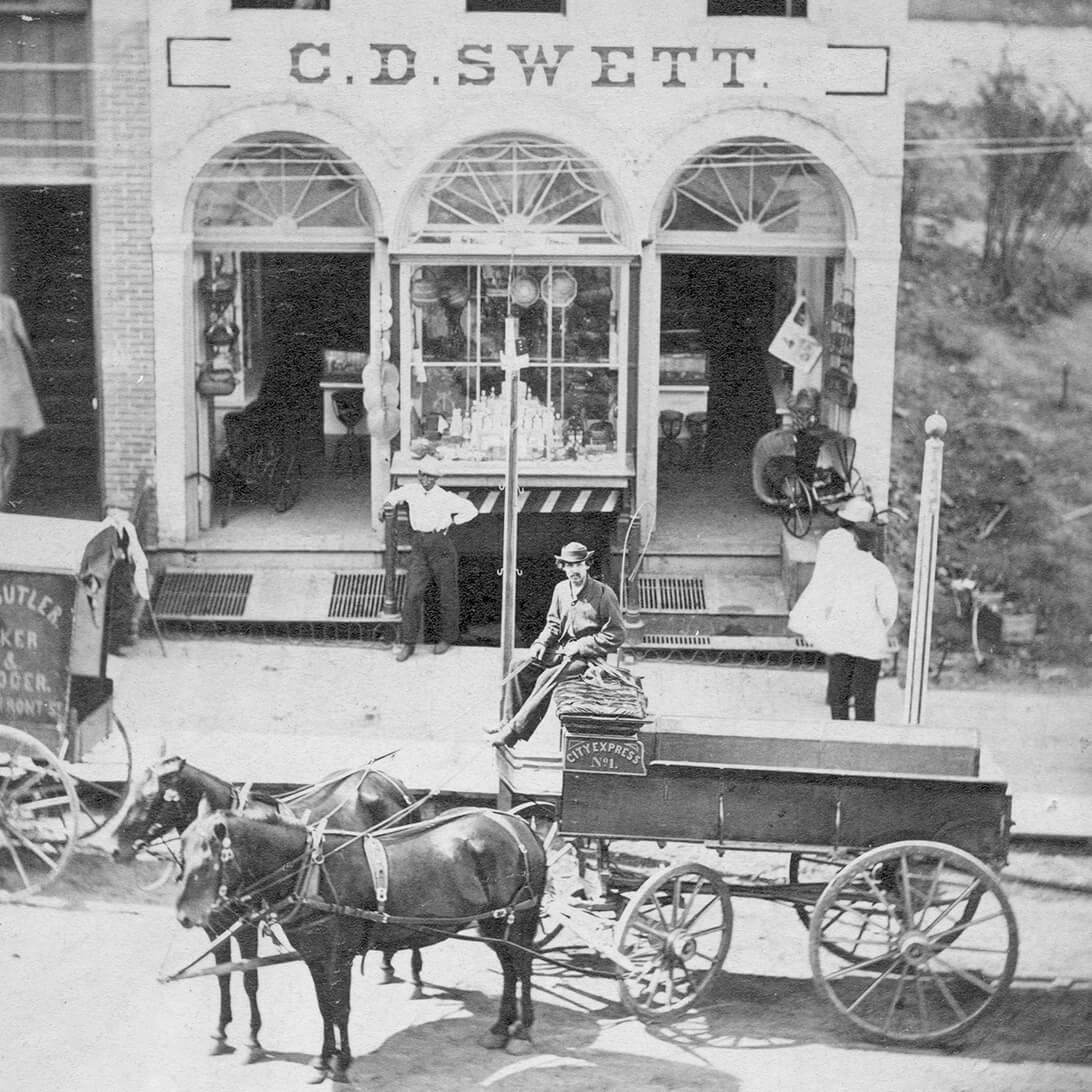
1850:
Who had the power to choose their work?
In the 1840s and 50s, more African Americans settled in McLean County. But they soon learned that their opportunities were limited.
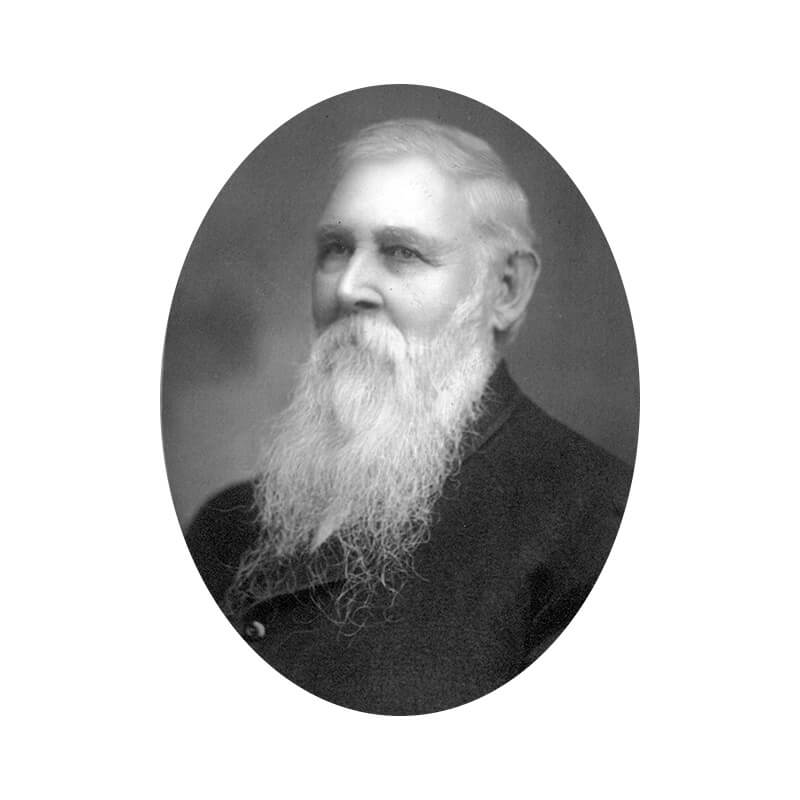
1855:
Who had the power to define morality?
Between 1850 and 1855, Bloomington’s population more than doubled from 1,600 to 5,000. Many of these new residents were Irish and German immigrants, who were traditionally hearty drinkers. Judgements regarding the morality of drinking were subjective, and highly dependent upon an individual’s cultural background. When disagreements occurred, the outcome could be violent.
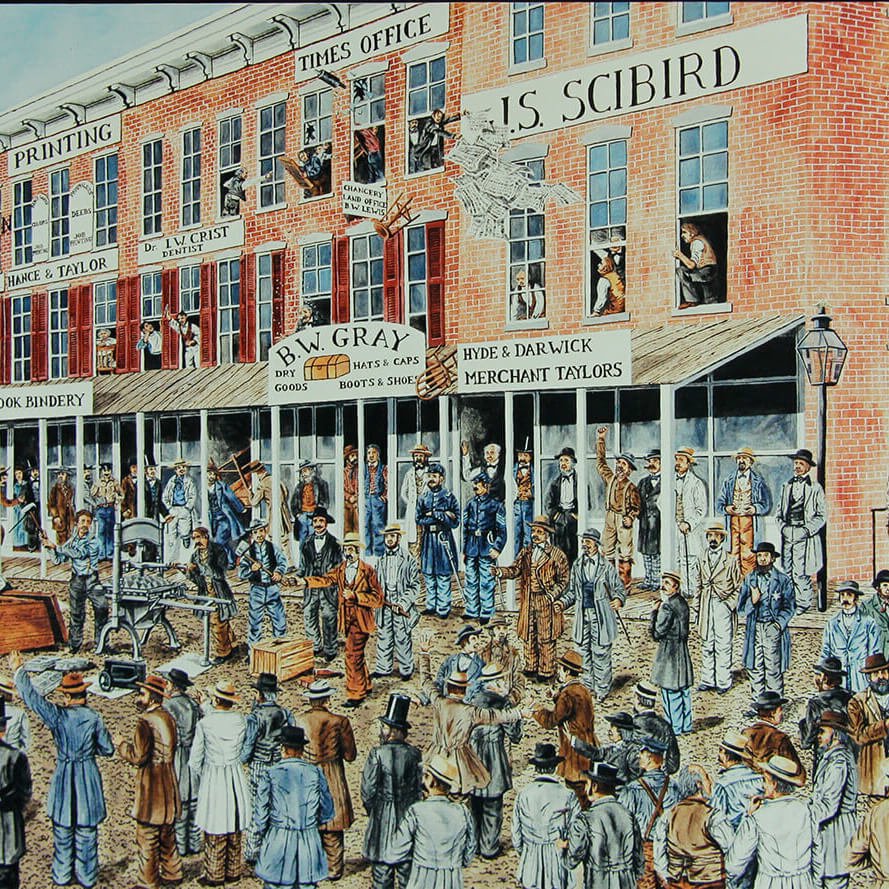
1862:
Who had the power to censor a person's political views?
By the time the Civil War began, views on slavery in McLean County had become predominantly anti-slavery. But there were still those who supported slavery.

1870:
Who had the power to vote?
Many women in McLean County believed that they, like men, should be allowed to vote.
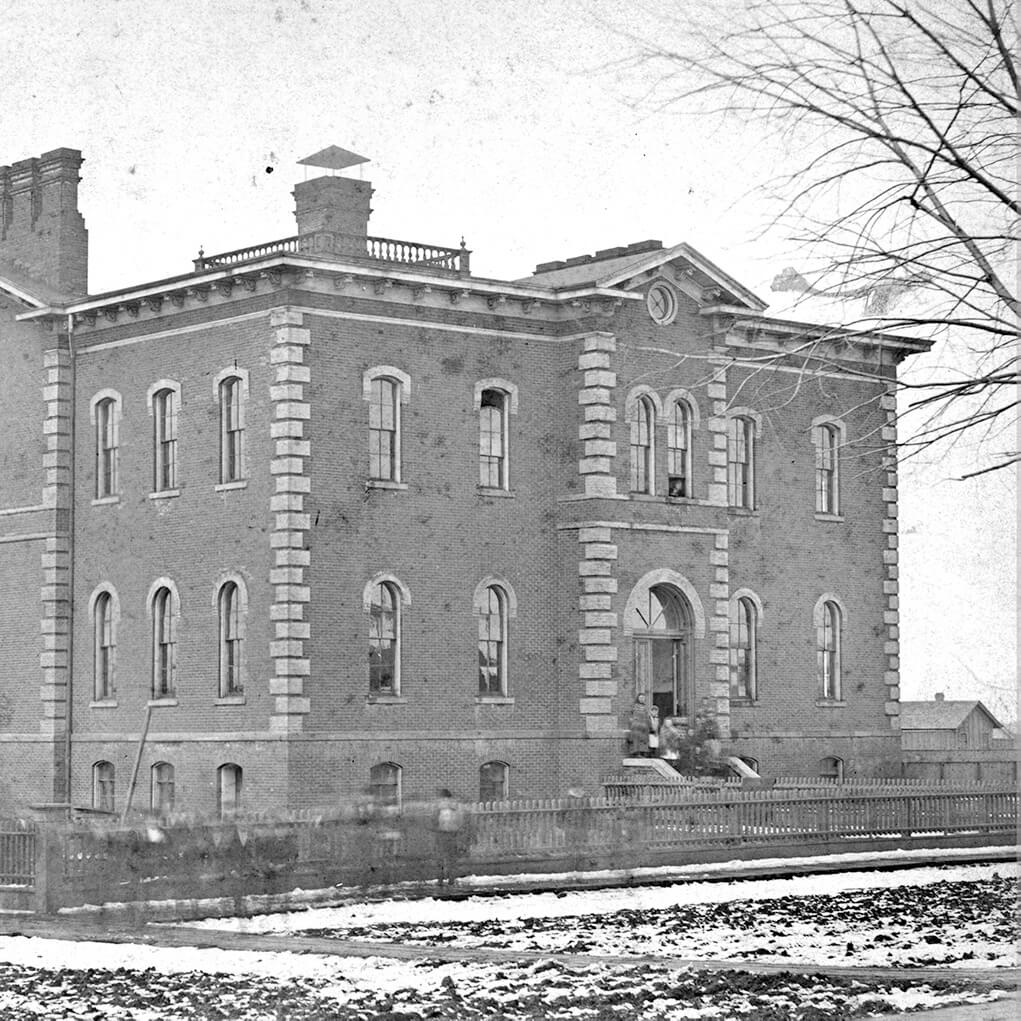
1871:
Who had the power to get an equal education?
In 1871, Martha and Henry Crow wanted their children to get as much education as possible.

1874:
Who had the power to be heard?
In 1874, the temperance women of Bloomington worked hard to get an ordinance passed that would prohibit the sale of alcoholic beverages.
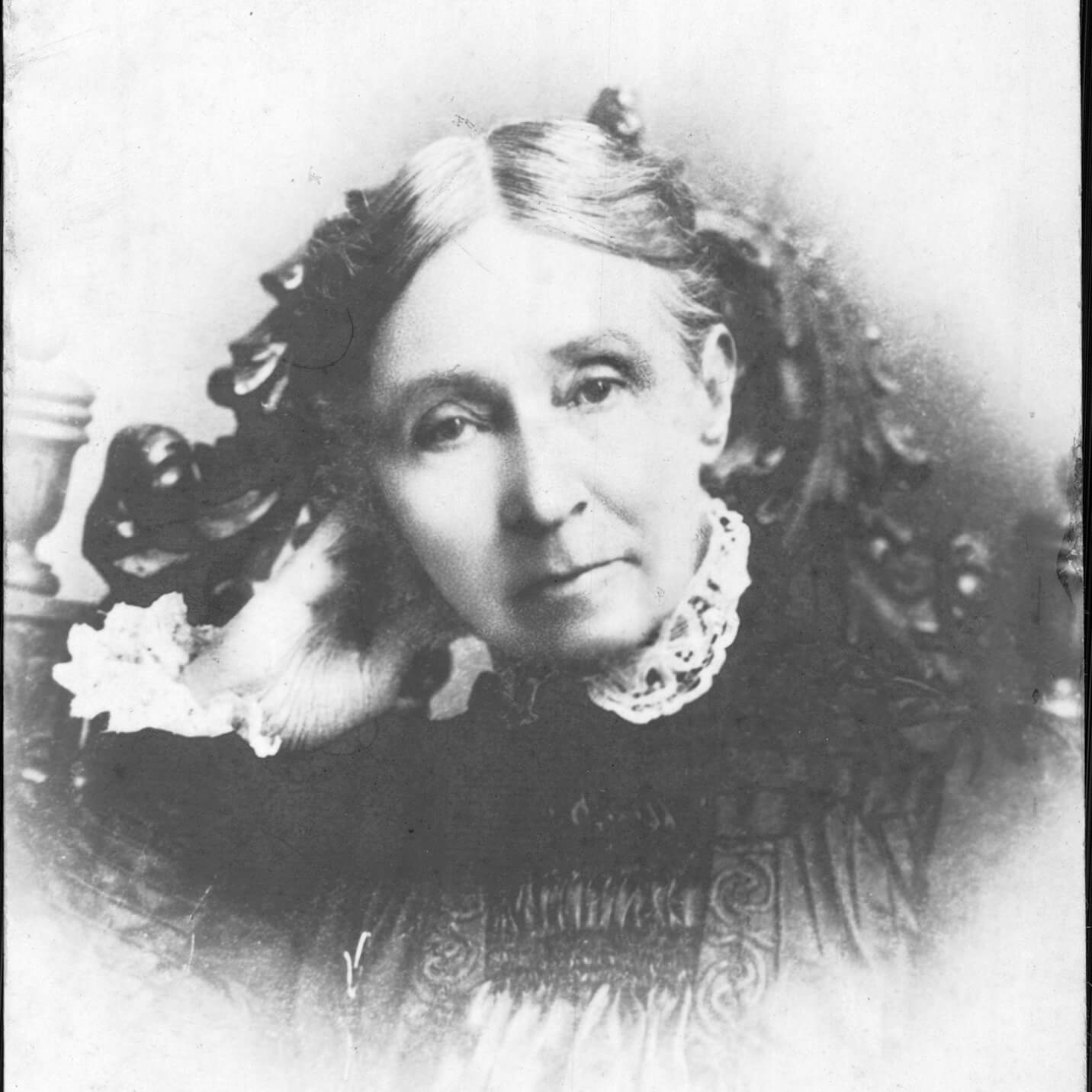
1880:
Who had the power to choose their career?
Some women were determined to achieve success in the career of their choice. Those who succeeded still faced prejudice and discriminatory pay practices.
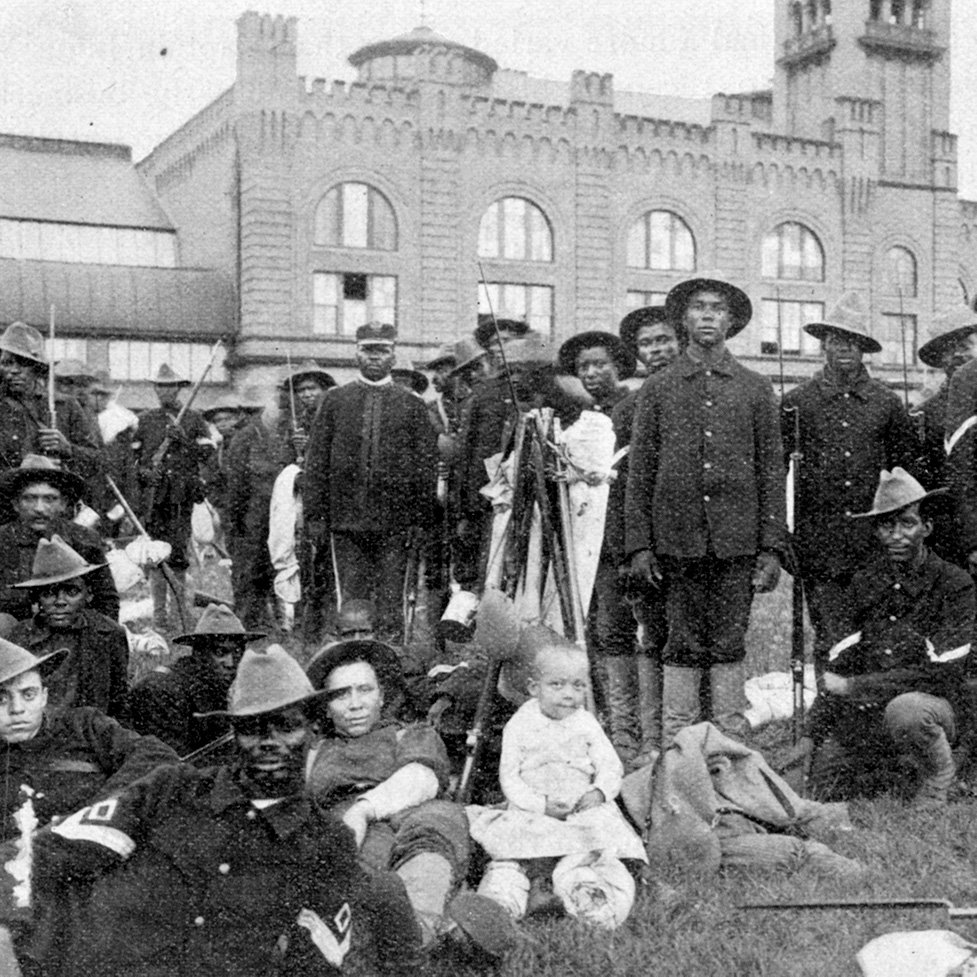
1898:
Who had the power to gain respect?
Bloomington’s African American citizens did not always agree when it came to politics. But they did agree that they deserved more respect from white people.
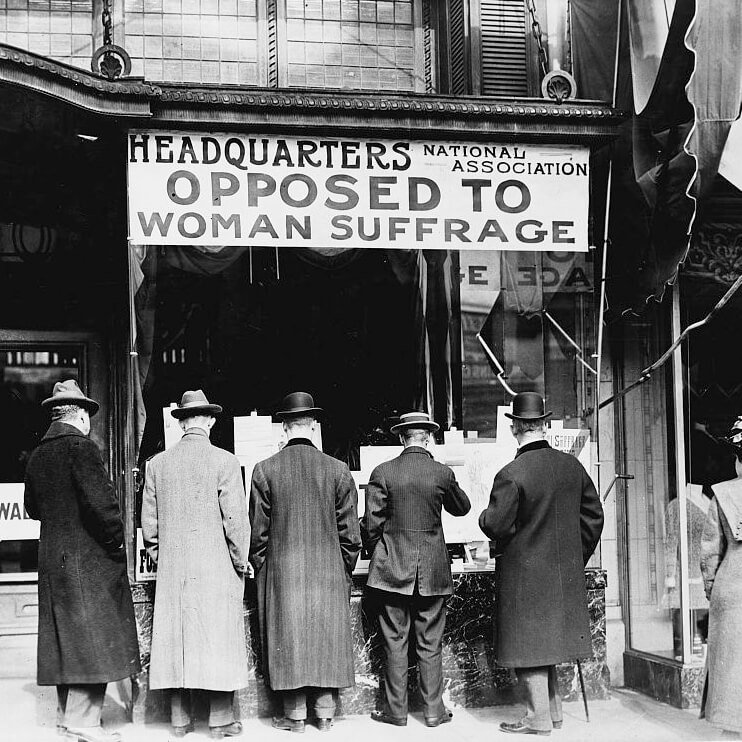
1907:
Who had the power to vote?
After securing local voting rights in 1891, area suffragettes worked to expand those rights—even as others continued their efforts to keep women from voting.

1917:
Who had the power to strike?
In 1917 Bloomington-Normal’s street railway workers were unhappy about their pay and the number of days they worked per week. They organized a union to consolidate their power, hopeful that change would happen.

1918:
Who had the power to instill fear?
When the U.S. entered World War I, anti-German sentiment began to grow across the nation. At the time German immigrants represented about three percent of McLean County’s population.

1919:
Who had the power to occupy public spaces?
During the late 1800s, Black people in McLean County were provided with equal access to public facilities and accommodations. But in the early 1900s, Jim Crow segregation dramatically increased in Central Illinois and Black people were increasingly treated as second-class citizens.
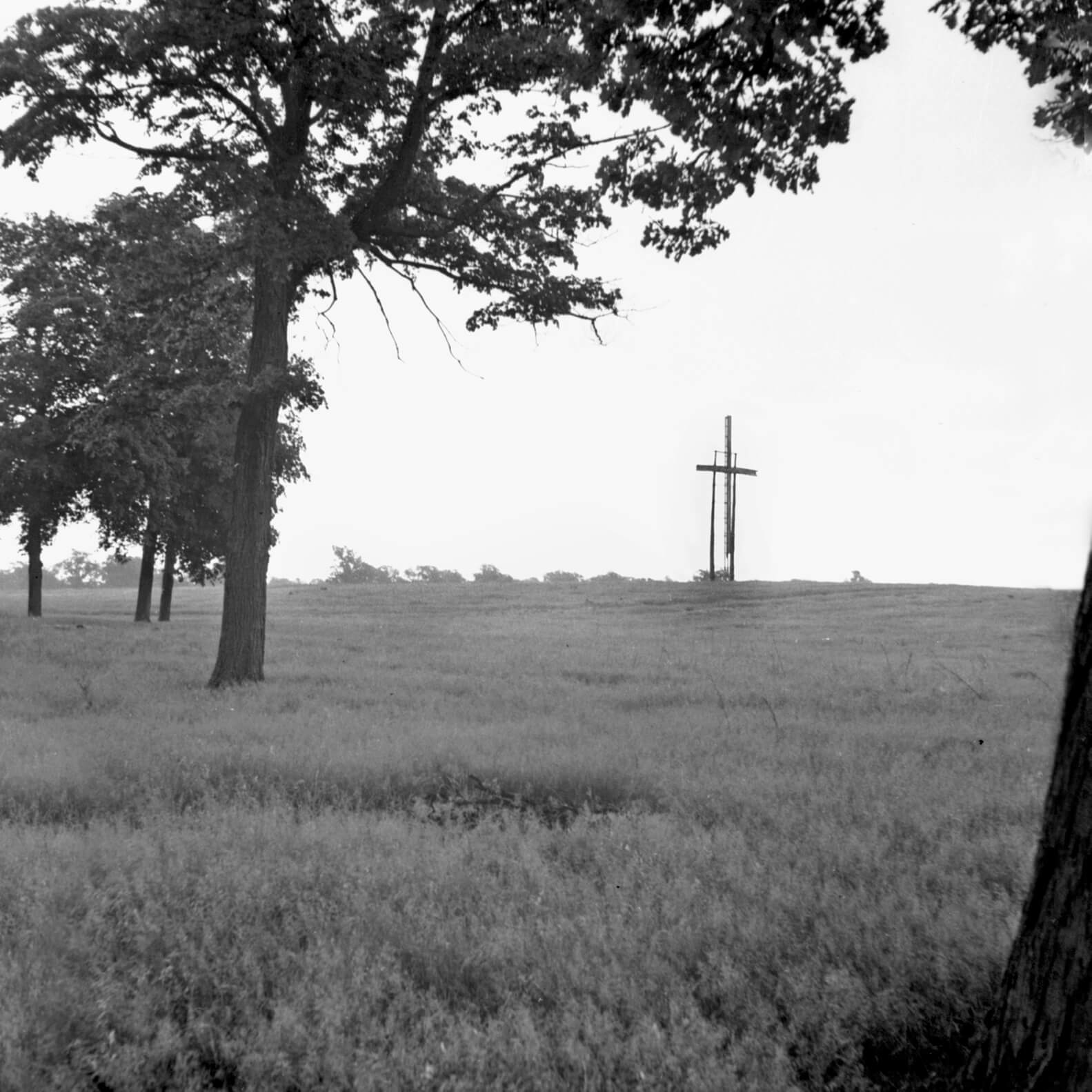
1921:
Who had the power to instill fear?
During the early 1920s, McLean County experienced an intense period of Ku Klux Klan (KKK) recruiting, meetings, and public gatherings.

1926:
Who had the power to control moral behavior?
In the 1920s the discrimination of female teachers was still prevalent, both locally and across the United States. Unequal pay and rules that focused on ensuring their moral behavior (both inside and outside the classroom), rather than standards of teaching, were still in place.

1931:
Who had the power to be heard?
Many people lost their jobs during the Great Depression, making survival difficult. Local leaders established a relief office from which donations of cash, food, fuel, and other supplies were distributed to the unemployed and needy. But some demanded more.

1939:
Who had the power to access an equal education?
Black students could attend Illinois State Normal University as early as the 1870s. But if they could not find off-campus housing in Bloomington or Normal, that opportunity disappeared.

1964:
Who had the power to choose their work?
Well into the 1980s, women were generally not considered qualified or physically capable of holding a police or firefighter job.

1965:
Who had the power to choose where they lived?
Low income residents faced challenges when it came to home ownership. Their treatment by government officials made it nearly impossible for them to improve their circumstances, and sometimes made their situations worse.
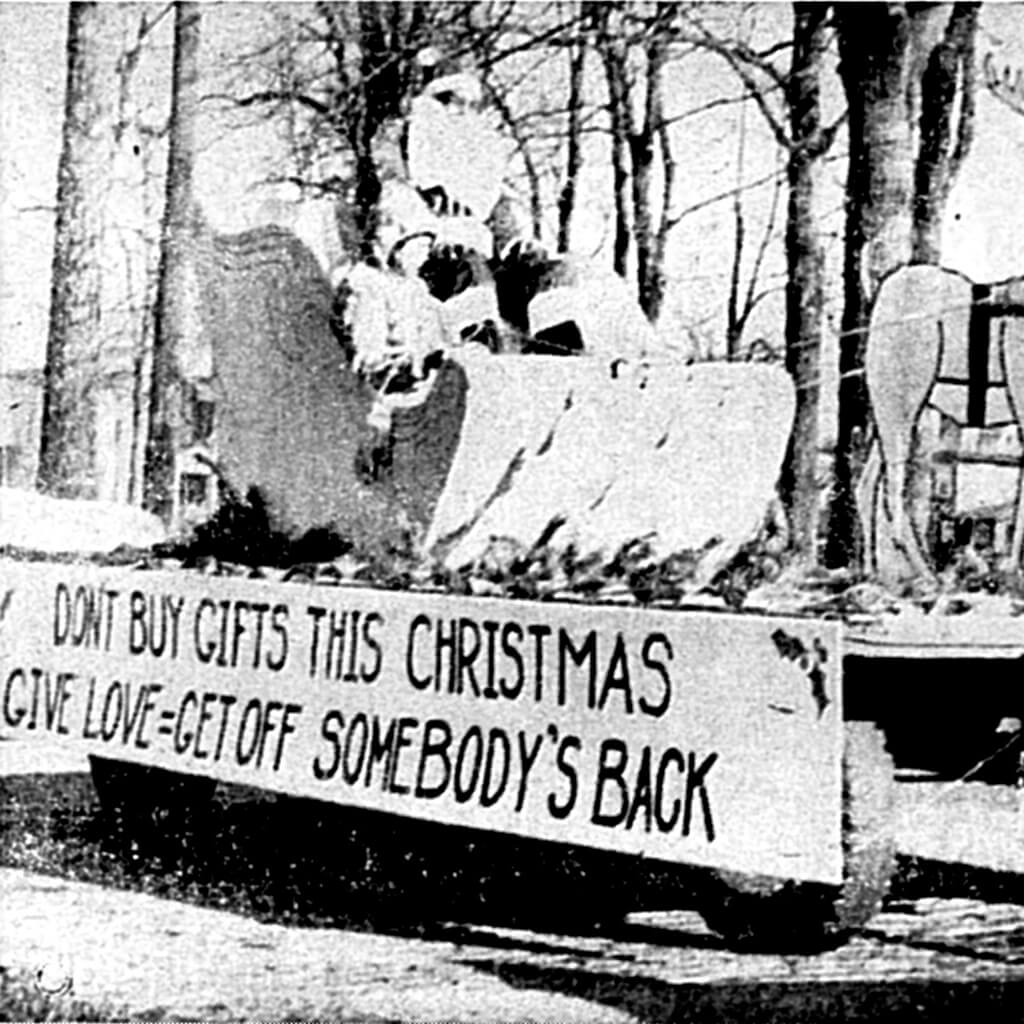
1966:
Who had the power to define morality?
In 1965 the Bloomington-Normal NAACP decided it was time to challenge how the community viewed local businesses that discriminated.
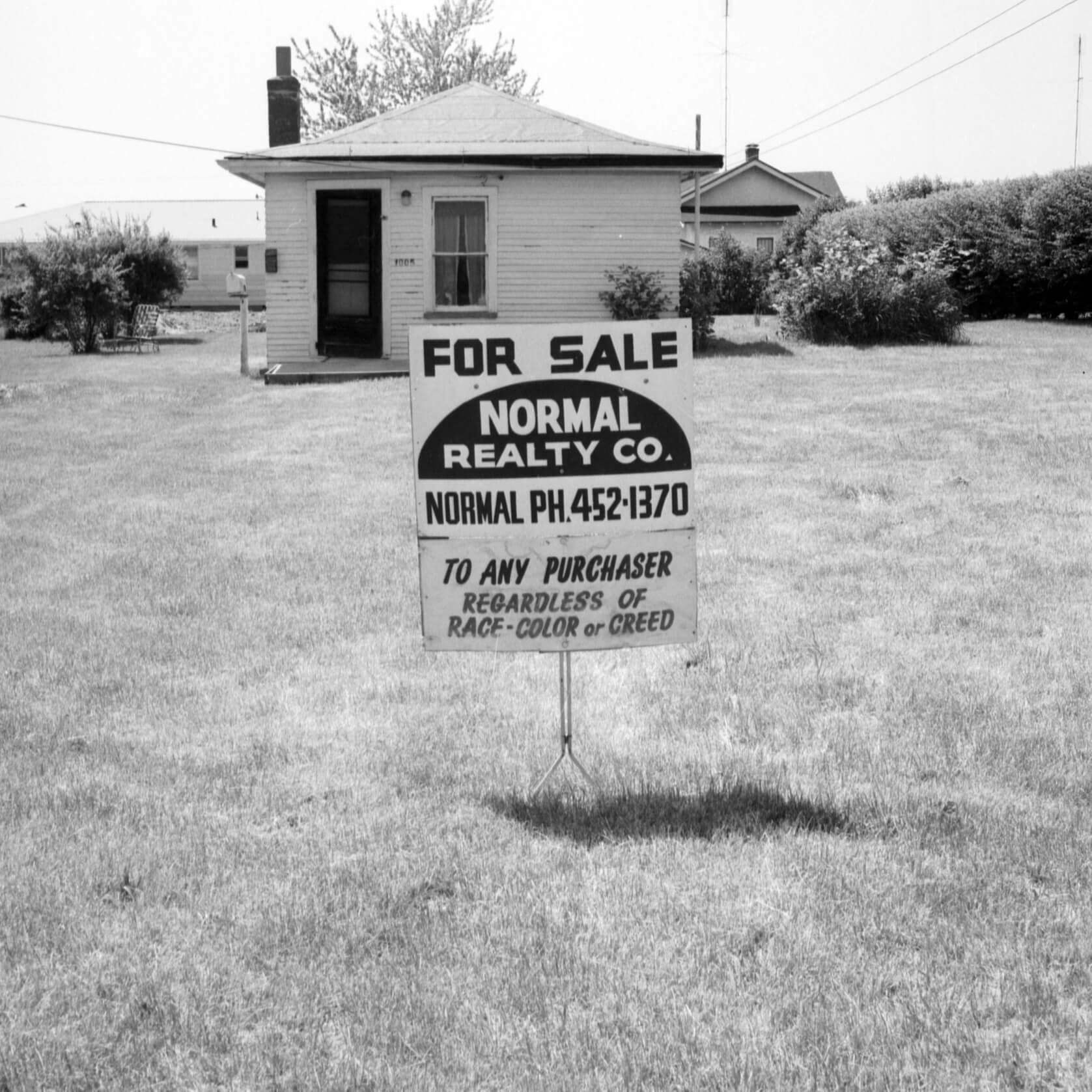
1967:
Who had the power to choose where they lived?
In 1967 ISU adopted affirmative action and began a concerted effort to recruit Black students. But an open housing ordinance had not been passed in Normal, and the ability of Black students to find housing was limited because of discriminatory housing practices. In addition, realtors refused to show homes to Black professionals in white neighborhoods.

1969:
Who had the power to be heard?
Local residents held diverse views on whether American military forces should be involved in the Vietnam War. As the war progressed and it became more evident that victory would not be easily achieved, tensions rose.

1970:
Who had the power to gain respect?
Despite new civil rights laws, discrimination still existed in Bloomington schools.

1971:
Who had the power to be heard?
In 1971 the Equal Rights Amendment (ERA), authored by Alice Paul in 1923 and submitted to Congress every year since its introduction, was approved by the U.S. House, and the following year by the full Senate. Soon after that it was submitted to state legislatures for ratification.
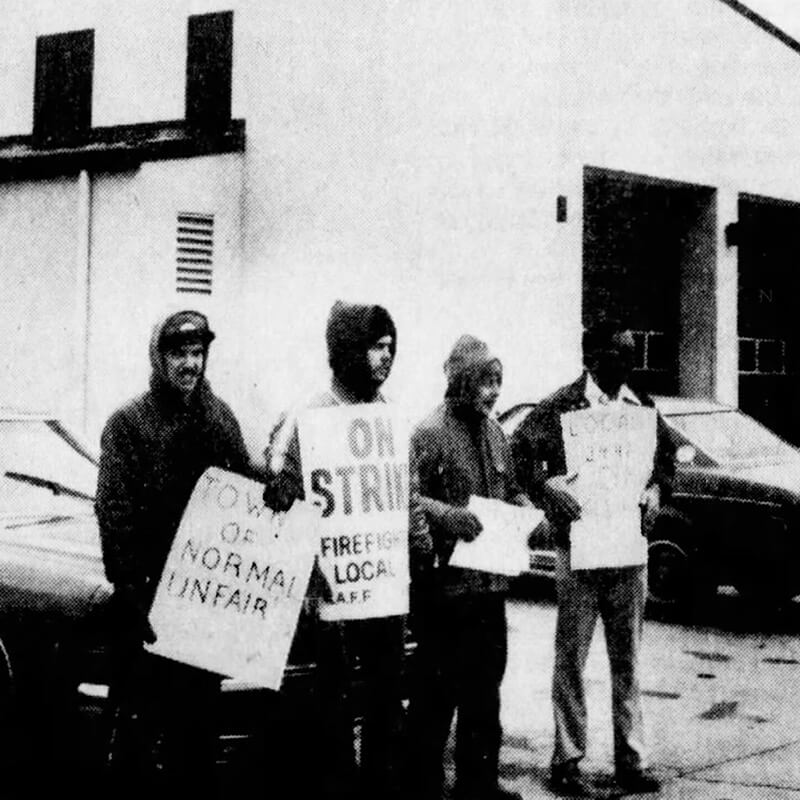
1978:
Who had the power to strike?
In 1971 the Town of Normal decided to hire and pay full-time firefighters — they had previously been volunteers. In 1975 all 27 members of the department organized Local #2442 in order to ensure bargaining power when it came time for contract negotiations.
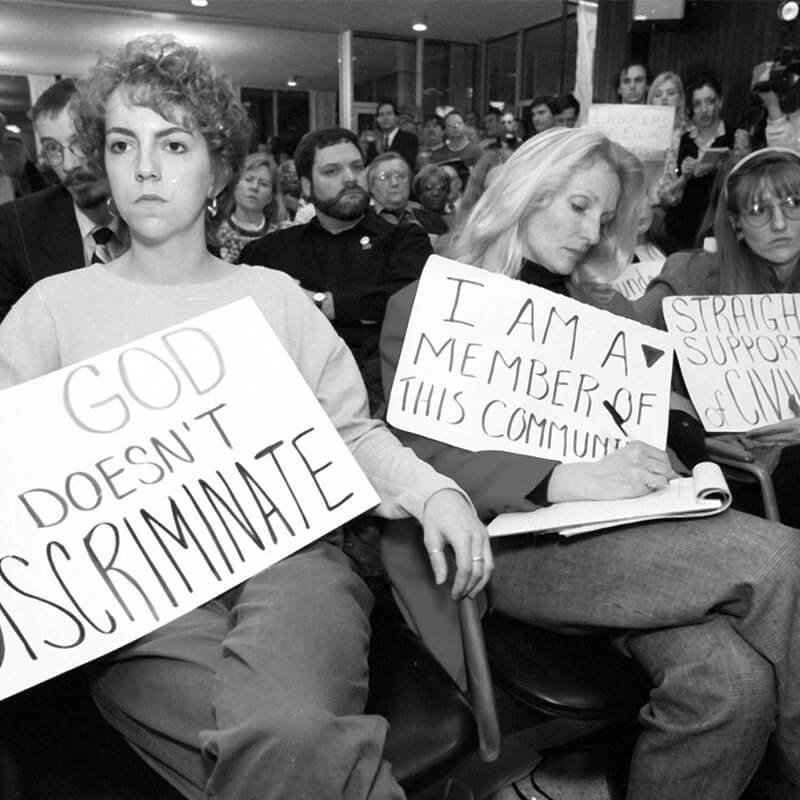
1984:
Who had the power to define morality?
Members of McLean County’s gay and lesbian community faced discrimination, hateful rhetoric, and physical harm long before the Town of Normal or the City of Bloomington began to consider adding sexual orientation to their discrimination ordinances.

1994:
Who had the power to control another human's body?
On December 15, 1994 Diamond Star Motors (DSM) was slapped with a lawsuit charging the company with sexual and racial harassment and discrimination.
 Making a Home
Making a Home
 A Community in Conflict
A Community in Conflict
 Working for a Living
Working for a Living
 Farming in the Great Corn Belt
Farming in the Great Corn Belt
 Abraham Lincoln in McLean County
Abraham Lincoln in McLean County